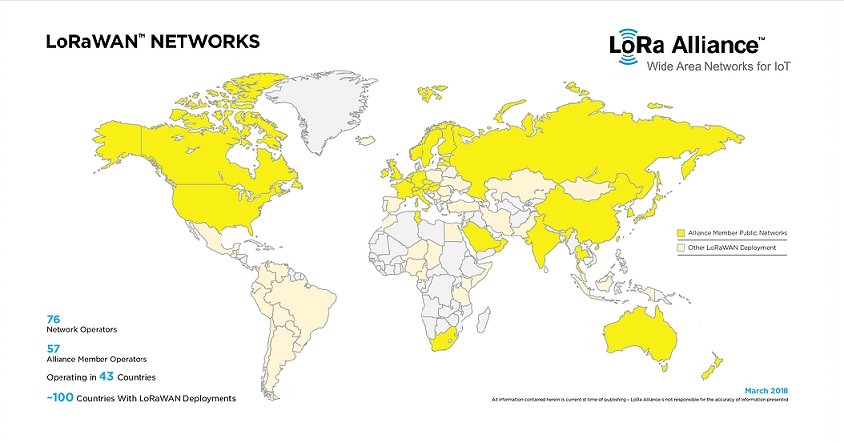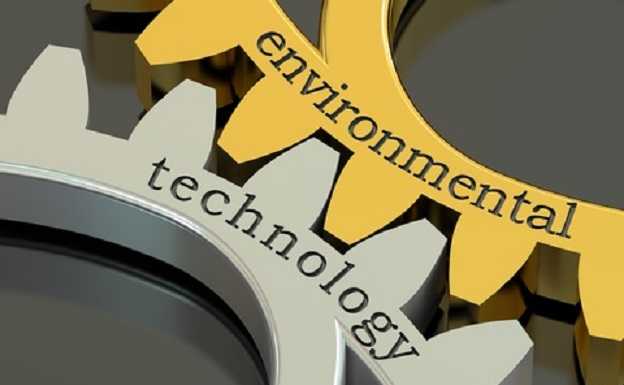The Internet of Things (IoT) presents a lot of challenges, and one of the biggest is getting the data from those Things to a location where it can be processed and acted upon. The problem is, Things range from sensors smaller than a grain of rice to manufacturing equipment containing a battery of circuits that all need to be monitored and controlled. One size does not necessarily fit all.
In addition, there are dozens of incompatible communications protocols in use in the IoT world, and thus many devices have to connect to gateways that translate their traffic into standard TCP-IP that can be used on corporate networks. And that’s fine, if there are wires connecting the devices. But what about all of the sensors and other devices that have to communicate wirelessly?
Another big problem is power. If there is, say, a wind turbine in a remote area of Scandinavia that can only be accessed by air or overland trek, but that needs monitoring, are you going to hike in, in the dead of winter, just to change the batteries powering its sensors? Not likely! It would be ruinously expensive, not to mention potentially dangerous for the technician.
Situations like these have driven the industry to develop a standardized specification for low power, wide area wireless networks (LPWAN) to connect IoT devices. It’s known as LoRaWAN – Long Range Wide Area Network – and it’s administered by the not-for-profit LoRa Alliance, which oversees the standard and provides certification. LoRaWAN’s technology is designed to securely connect low-cost, battery-operated sensors over long distances and in challenging environments. The Alliance claims that a LoRaWAN gateway can connect to sensors more than 10 kilometres away, or to sensors on devices that are underground or in basements. It says that the LoRaWAN protocol offers unique and unequaled benefits in terms of bidirectionality, security, mobility, and accurate localization that are not addressed by other LPWAN technologies.
In a statement, Geoff Mulligan, chairman of the LoRa Alliance, said, “The LoRaWAN protocol is being adopted so quickly because it provides an open standard with 10+ years of node battery operation, a range of 10+ kilometers and an average node bill of materials of less than $10, providing a wide-area alternative to the high cost, complexity and overhead of other network implementations.”
 Currently 76 network operators worldwide, 57 of whom are Alliance members, have deployed LoRaWAN networks in 100 countries. LoRa Alliance membership crossed the 500 mark in June of last year, just over two years after the organization’s founding.
Currently 76 network operators worldwide, 57 of whom are Alliance members, have deployed LoRaWAN networks in 100 countries. LoRa Alliance membership crossed the 500 mark in June of last year, just over two years after the organization’s founding.
At this year’s Mobile World Congress (MWC) in Barcelona, Spain, over a dozen members, including eleven-x, operator of Canada’s only public coast-to-coast low-power network built for IoT, strutted their stuff, demonstrating many applications for the technology.
Some of them might surprise you.
For example, the winner of the LoRaWAN Challenge, a global IoT competition held in conjunction with the Navispace IoT/WT Innovation World Cup that encourages companies and individuals to develop products that leverage the LoRaWAN protocol, was France’s Tech4Race with, of all things, a real-time tracking solution for outdoor sporting events. The Thing involved is a tiny, light (40g), waterproof GPS tracker that communicates with its monitoring platform using LoRaWAN and allows organizers and spectators to track each participant. Should an emergency arise, responders know exactly where to go.
Another Challenge participant, Spain’s Insulcloud S.L., presented a LoRaWAN version of its Insulclock, a device that plugs in to any insulin injector pen and turns it into a smart pen that transmits information about the dosage administered, as well as tracking time and date of the shot, and the scheduled time for the next injection. With LoRaWAN, the patient doesn’t need a smartphone as an intermediary – the data goes straight to a gateway, and then is sent to the patient or the caregiver, making it ideal for patients who don’t have phones, or who are unable to handle their own monitoring.
The Alliance members also demonstrated more traditional uses of IoT in the MWC showcase, with three zones highlighting energy and utilities, smart agriculture, and buildings and industrial applications.
In the smart agriculture section, vendors showed off how disparate systems from multiple vendors could be connected through gateways from member Everynet, and their aggregate inputs visualized in an integrated “Farm to Factory” application. Farmers can monitor irrigation and water levels, pest control, and livestock, and continue along the food chain to track environmental conditions in logistics as the goods head to market.
The smart cities/buildings zone included an end-to-end network with asset tracking (do you know where that garbage bin has gotten to?), monitoring of sensors embedded in structures to gauge structural health, door and window sensors for homes, and parking space monitoring (given the sensors for many of these systems are buried, LoRaWAN’s 10 year battery life is a major plus here).
At MWC, LoRaWAN wasn’t the only IoT communications mechanism being touted. But it is the most mature. Although 5G cellular communication holds promise too, the standards are still being nailed down, and commercial availability isn’t expected until next year, even then on a limited scale. It, too, promises low power networks with low latency.
Another advantage LoRaWAN has is its ability, so far at least, to respond quickly to regional requirements. For example, last year it added support for India’s 865 MHz band, enabling a deployment managing data from 200,000 sensors and gateways using Hewlett Packard Enterprise’s Universal IoT platform; it added support for Australia’s altered ISM band (which extended maximum range and payloads of LoRaWAN networks); and globally, it created more consistent support for regions where maximum permitted transmission power is expressed as equivalent isotropic radiated power (EIRP); and introduced design changes to allow full support for roaming between different vendors’ networks. Given standards bodies’ tendency to endlessly debate, this readiness to adapt is an encouraging sign for the industry.
Once 5G hits the market properly, the IoT world will get even more interesting. Technology that works in the lab and in limited testing may or may not scale, may or may not be cost-effective, and may or may not be better than what’s already available. The market will be the final arbiter.








